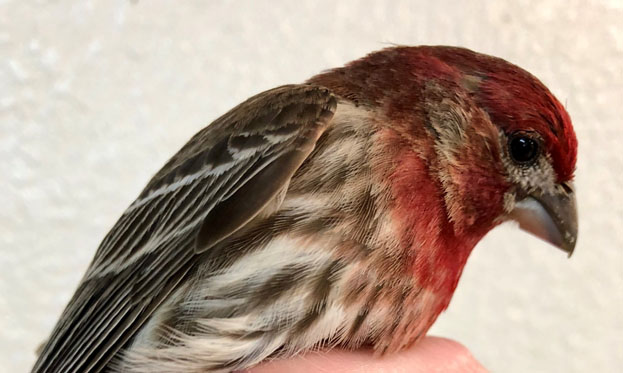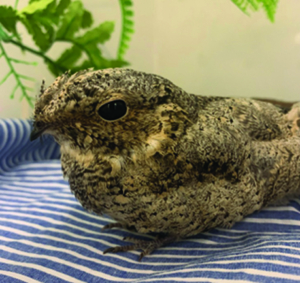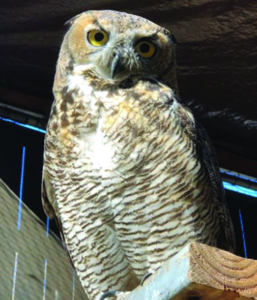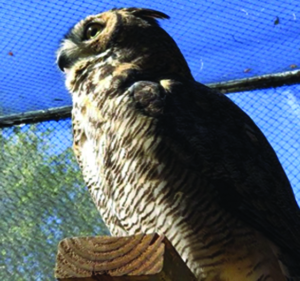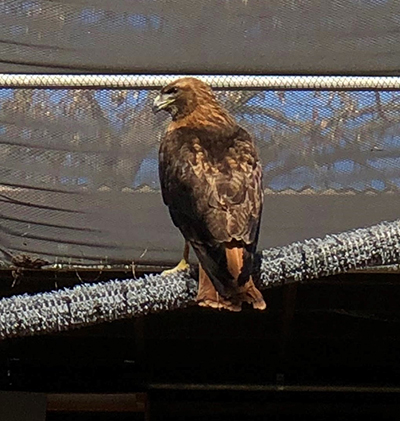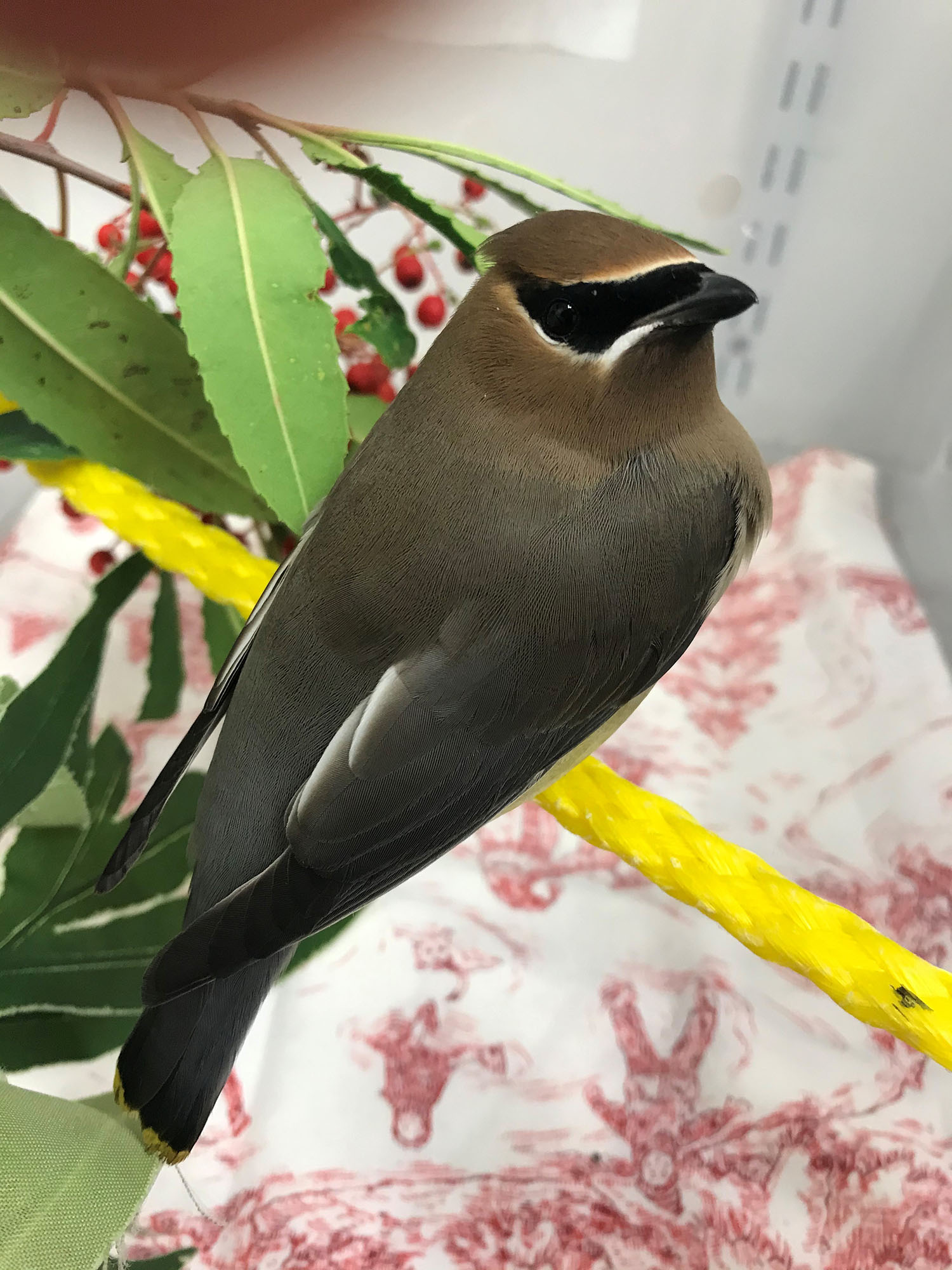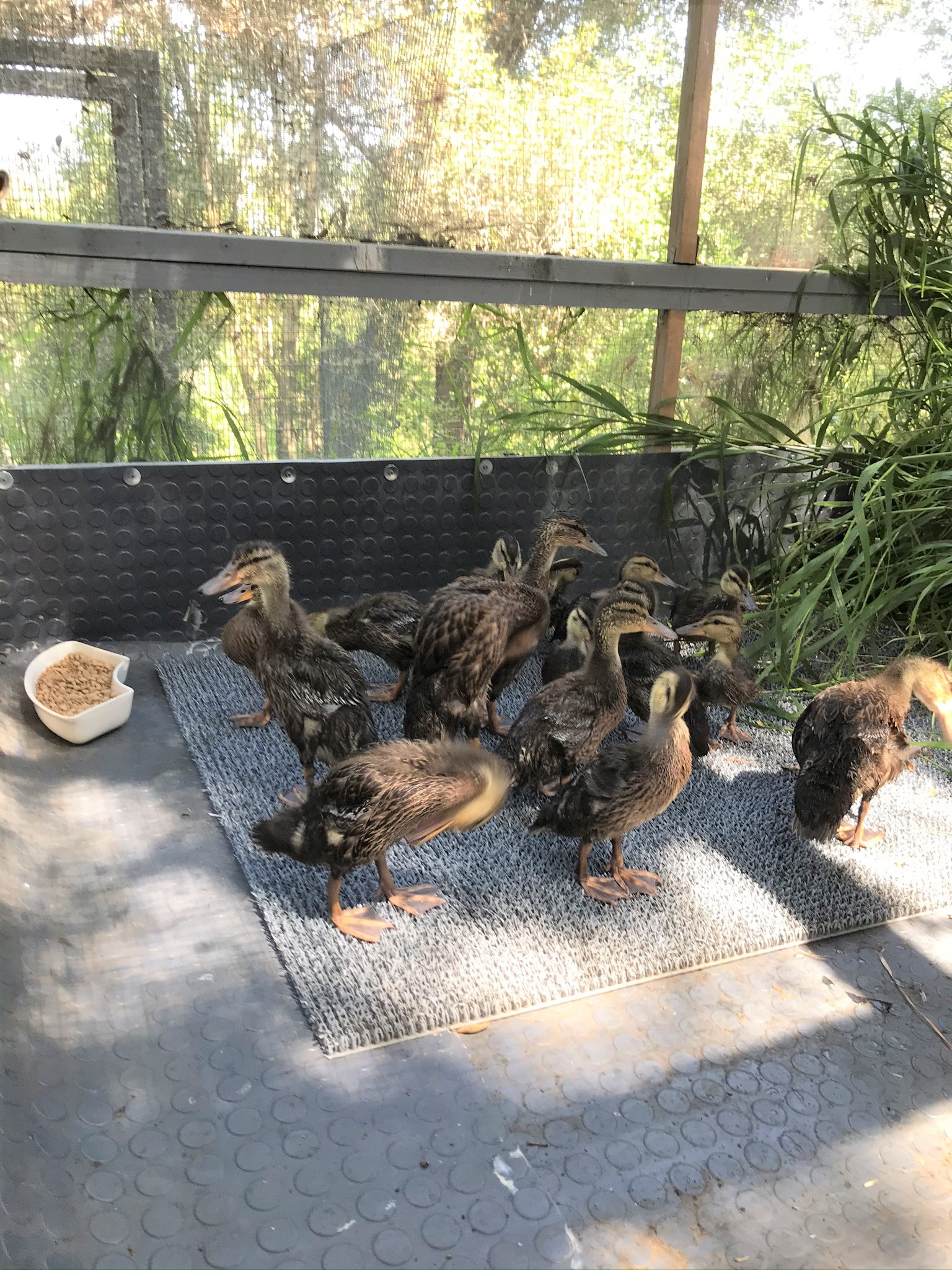Two California Scrub-Jays Get a Second Chance
By Kristen Kanatzar, Wildlife Technician
The Orphan Care Unit (OCU) is dedicated to the care of young, orphaned wildlife such as squirrels and finches. As they are found along the West Coast of the US, Canada, and Mexico, another species we care for in the OCU are nestling and juvenile California Scrub-Jays. One of our recent patients was a nestling scrub-jay that had most likely fallen out of their nest. On intake we found the bird to be in good health overall but with a head tilt. Head tilts are usually a sign of neurological damage and brain swelling. Although the exact cause of the injury was unknown, the patient most likely hit their head on a hard surface when they tumbled from the nest. We prescribed anti-inflammatories to help reduce the suspected swelling of the brain. These medications also provided the young bird with pain relief. The patient quickly started to improve, and within ten days the juvenile scrub-jay was no longer showing any signs of trauma. OCU continued to provide supportive care until they were old enough to survive on their own. After five weeks in care, the healthy bird was released back into the wild.
Juveniles scrub-jays are mostly gray in color with sections of blue on their tails and wings. They are significantly fluffier than adults as they still have their downy feathers that help keep them warm. As they get older, they shed these downy feathers, and they sleek down into their new adult plumage with the distinctive bright blue colors.

Juvenile California Scrub-Jay
Another California Scrub-Jay who recently came through our doors was suspected to have been caught in a glue trap. The fledgling bird was cared for in OCU, where they were stabilized before being cleaned. Technicians carefully removed the glue contamination with specialized solvents and warm soapy water. The washing process can be extremely stressful on wild animals, so technicians were only able to clean small portions of the feathers at a time. After about a week the scrub-jay was completely free of contaminations and was soon moved into an outdoor aviary. One month after being admitted to our facility, the California Scrub-Jay was ready for release.
Scrub-jays tend to live in coastal woodlands but can often be seen in urban areas and in people’s backyards. They are omnivores that tend to scavenge for food including fruits, insects, nuts, seeds, and small animals such as lizards and other hatchling birds. Being part of the corvid family, which includes crows and ravens, scrub-jays are highly intelligent and can often have a sneaky side.
We will frequently catch them in their enclosures playfully tossing mealworms around and helping feed each other. They will also take some of their food and attempt to hide it within the enclosure much like they would in the wild.
These two young birds were fortunate to make it to our facility. Through the hard work and dedication of the OCU staff and volunteers, these California Scrub-Jays got a second chance at life!



